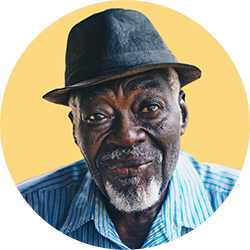Since June is Alzheimer’s and Brain Awareness Month, there is no better time to walk a mile in a memory care resident’s shoes and fine-tune your dementia program to provide the best care possible.
The first step is to gain a thorough understanding of the disease by truly looking at the world through the eyes of a person living with dementia. This approach and grounding will help direct-care staff interact and care for resident’s more effectively as the disease progresses.
Well-rounded programs also incorporate safe room design, person-centered care and fall detection and prevention measures in addition to a well-trained, direct-care team. A comprehensive dementia-care program will go a long way in helping families decide which community to choose for their loved one. Keep in mind that families are making their selection from a crowded field of options, so it is vital for operators to market their dementia-care program best practices and showcase the high level of care residents will receive in their community.
The following best practices will help get a dementia-care program off the ground or elevate an existing program:
- Understand how residents living with dementia see the world:
Transitioning a loved one to a senior living or memory care community is a difficult and emotional decision for families. To provide reassurance and peace of mind, sales and marketing teams should highlight that their community offers a superior dementia-care program and has a keen understanding of what it is like to live with Alzheimer’s and dementia. It’s important to convey that your program wasn’t created in a vacuum but follows best practices, including training direct-care staff to provide individualized care. - Accommodate deteriorating vision
For people living with Alzheimer’s and dementia, their field of view narrows considerably, which makes it seem like they are looking through a pair of binoculars. To combat these issues, communities should avoid using shiny or reflective surfaces on floors or tabletops and review poor lighting. These seemingly innocent items can create a disorientating glare or a disturbing shadow. - Design a safe living space
Communities should provide a well-organized space to promote serenity. Simple things like labeling drawers to improve the ability to locate key items, designating locations for important items, and providing visual stimulation through personal photographs will help residents become familiar with their surroundings and feel more peaceful. Many residents also use mobility aids and need a clear path to the bathroom and room to navigate around their bed. Remove unnecessary furniture and obstacles from pathways, evaluate how a resident navigates doorways, and limit the use of unstable furniture, such as folding tables. - Train staff on person-centered care
It is important for the direct-care team to spend one-on-one time at a resident’s bedside attending directly to their needs and learning their preferences. A person-centered approach for residents living with dementia does vary from traditional medical care. For instance, direct-care staff traditionally record if a resident ate his breakfast, showered and participated in social activities. A resident living with dementia will most likely struggle with this approach, so it is more beneficial to put the resident’s needs and preferences first and goals and tasks second. - Elevate fall detection and prevention
Many senior living communities that want to elevate their fall detection programs are turning to SafelyYou to uncover exactly why residents are falling. SafelyYou’s artificial intelligence-enabled camera technology detects a fall by analyzing the video feed from cameras placed in a consented resident’s room, stores video only when a fall is detected and sends alerts when a fall occurs. Subsequent fall video review during a fall huddle enables fall prevention action plans to prevent future falls.
While not all communities will be able to implement all of the best practices, you can take a few steps to create a safer living environment and ensure you are meeting residents’ needs. It is essential to market this level of specialized care to family members. It can easily be the deciding factor in choosing a community.
Learn more about dementia-care best practices
This is a very high-level look at a comprehensive dementia-care program. For in-depth details, please download SafelyYou’s whitepaper, Dementia Through Their Eyes.
To learn more about developing an effective dementia-care program for your community or to request a fall technology demonstration, contact SafelyYou at [email protected].





